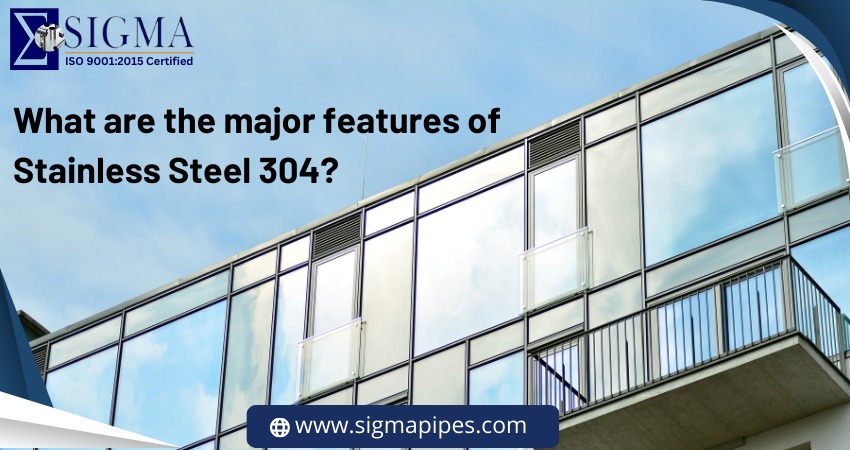Steel is the backbone of modern industry. Composed of primarily carbon and iron, steel has an upper hand over other metals. One of the classes of steel is known as the stainless steel, which utilizes chromium to reduce the usual corrosion experienced by most iron-based materials. Today, Sigma Steel Pipes, known for manufacturing and supplying premium-quality Stainless Steel 304 is here with yet another blog on the very popular Stainless Steel 304. Here, we will be telling you about its physical, mechanical, and working properties. In this manner, companies and industries will gain a better understanding of what this material is, how it works, and where 304 steel is applied in the industry so that they can potentially select this material for use in their own projects.
A sneak peek into SS 304
Stainless steels get their names from the American Iron & Steel Institute (AISI) and the Society of Automotive Engineers (SAE), who have separately created their own naming systems for steel alloys based on alloying elements, uses, and other factors. Steel names can get confusing, as the same alloy can have different identifiers depending on which system is used; however, understand that the chemical composition of most alloy blends remains the same across classification systems. In the case of stainless steels, they are often composed of 10 to 30% chromium and are made to withstand varying degrees of corrosion exposure. To learn more about the differences among stainless steel, feel free to read our article on the type of stainless steel.
The Type 304 steel is part of the 3xx stainless steels or those alloys which are blended with chromium and nickel. Apart from these two elements, it has carbon, chromium, iron, manganese, nickel, phosphorus, sulfur, and silicon. The density of 304 steel is around 8 g/cm3. Type 304 steel also comes into three main varieties:
- 304
Here, the carbon content is between 0.08%. Type 304 steel is austenitic, which is simply a type of molecular structure made from the iron-chromium-nickel alloy blend. It makes 304 steel essentially non-magnetic and gives it a lower weakness to corrosion between grains thanks to austenitic steels being generally low carbon. 304 steel welds well using most welding methods, both with and without fillers, and it easily draws, forms, and spins into shape.
- 304L
304L has the lowest carbon percentage about 0.03%. It is reserved for large welding components that do not require post-welding annealing, as the low carbon percentages increase ductility.
- 304H
304H has the highest carbon content about 0.04-0.1%. It is most used in elevated temperatures where the increased carbon content helps preserve its strength while hot.
Major Physical & Chemical Properties
SS 304 is widely-used because of its physical and chemical properties. These include:
- Corrosion resistance
Type 304 steel, being the most popular stainless steel, is naturally chosen for its corrosion resistance. It can resist rusting in many different environments, only being majorly attacked by chlorides.
- Temperature tolerance
It also experiences increased pitting in warm temperatures (above 60 degrees Celsius), though the higher carbon grades (304H) mitigate this effect considerably. This means that 304 steel mainly rusts not in high temperatures, but in aqueous solutions where continuous contact with corrosive materials can wear down the alloy.
- Increased workability
304 sheets of steel are not readily hardened by thermal treatment but can be annealed to increase workability and cold worked to increase strength. If corrosion resistance is of high priority to a project, 304L is the best choice as its decreased carbon content reduces intergranular corrosion.
Wish to place a consignment of SS 304 pipes? Visit India’s leading stainless steel manufacturers at https://sigmapipes.com/ and get premium-quality pipes at a decent quotation.













